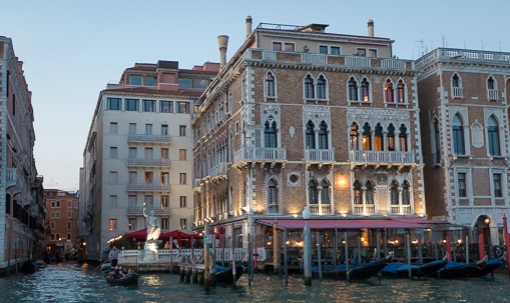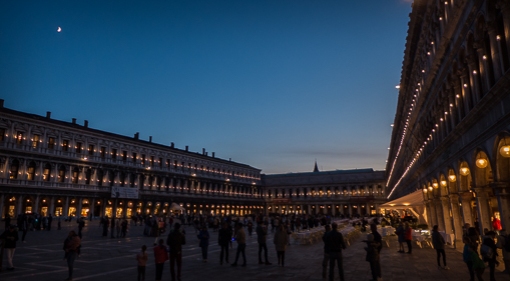Before we go any further into Venice and the Biennale, let’s come back to Milan for a bit of applied arts.
Arts & Foods. Rituals since 1851 is an exhibition curated by Germano Celant, held at the Palazzo di Triennale in Milan from April 9 to November 1, 2015. It was a World Expo “pavilion” that was located outside the Rho grounds. With our Expo Milano 2015 entrance tickets, we got to visit the Arts & Foods exhibition for free.

According to the exhibition catalog, “Visitors have the opportunity to immerse themselves physically in a spectacular route where works of art, drawings and architectural models, films, objects, documents, books, menus, and album covers bring to life a narrative that set works and images in their own historical, sociological and anthropological context.” What an all inclusive statement … hope it lives up to the promise.
One of the first few halls explored the design of dining rooms, public and private, from the 19th to the 20th century.
Czech cubism circa 1912 – Vlastislav Hofman

The show unites two themes – Arts & Foods – that are favorite topics of this blog. We liked the show enough to buy the exhibition catalog (“Catalog”), a heavy brick which we lugged around all the way to Venice and back.
A pristine 19th century butcher shop ?

An entire bar, full size, from late 19th century Italy was replicated here !

Charles Rennie Mackintosh set

There was a long display cases in which many pieces of cutleries laid out. When so many knives, scissors, forks, etc. of different sizes and shapes are presented side-by-side, it reminded me of a kit carried by movie villains who torture the hero.

The following knives and forks were a bit of a surprise for me (Chris) – these instruments were used by cannabilistic Pacific islanders. They use special tools for eating humans. Sue has seen them when she visited New Zealand years ago, and still recognized them.
Wahaika from New Zealand, 1888 (liver cleavers)

Ai cula ni bokola – cannibal fork from New Caledonia, 1888; Iculanibokola – cannibal fork from Fiji, 1874, 1884. Some of the tools themselves are made of bones, possibly human bones.

The show also traced the development of the modern kitchen from 1920 – 1950s.
Frankfurt kitchen – designed in 1926 by an Austrian architect – we saw a more complete set up at the Museum of Applied Arts (MAK) in Vienna – click here.

L’Autarca table by Angelo Fasce, 1935

Spazialita lunari by Fortunato Depero 1923 – a Futurist, Balla’s colleague

Crockery with Suprematist graphics by Nikolai M Suetin, 1930.

Kazimir Malevich, like his paintings.

Gaggia from 1950, the customer-facing side

… and the server side

More professional food service machines : soda recharging machine, 1920; Molidor electric grinder, 1945 , Polarstar multi-station coffee maker, …

More to come in the next post.








































































 Danish modern and Pop
Danish modern and Pop





































